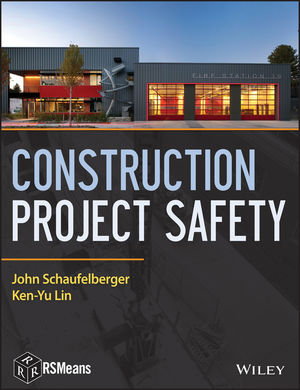Consider these qualities when selecting head protection for construction workers

Helmets and hard hats are an absolute must when working in construction sites, confined spaces, and other potentially hazardous environments. They protect workers from falling or moving objects, falls, collisions, and extreme heat. Not all headwear is made equal and some sizes, styles, and features work better in certain situations than others. Here are several qualities to consider when selecting head protection for you and your team.
Helmet vs. hard hat
The first decision you’ll have to make is between helmets and hard hats. Despite what you may have heard, these terms are not interchangeable. A helmet is not the same as a hard hat, regardless of what your workers call them in the field.
Hard hats are generally made from fiberglass or plastic, and go over the head of the worker. It’s designed to protect them against falling objects and other forms of debris.
Hard hats do not usually come with chin straps, so the hat may potentially come off if the person bends over, falls or encounters strong winds. They are typically worn by managers and those supervising the construction site, rather than the workers themselves.
A helmet covers more of the person’s head. It comes with a chin strap, so it won’t fall off throughout the workday. Individuals can bend over, move objects, and go about their business without worrying about losing their helmets. This keeps the helmet securely fastened to the person’s head for more reliable head protection.
Your team should be able to distinguish between hard hats and helmets on the job. If your workers need to occupy a hazardous space for long periods of time, they are usually better off with a helmet than a hard hat. Also jobs that require climbing or inverted positions would be well served by a helmet.
Automatic release vs. non-releasing chin strap
Helmets come with two different kinds of chin straps: automatic release (breakaway) straps and non-releasing straps. Both come with pros and cons.
The automatic release strap is used to make sure workers don’t suffocate if they fall. As pressure builds around the neck, the strap will automatically come loose, so the person can breathe easily until they are rescued. Without the release strap, workers may lose oxygen while dangling in the air. That’s why many teams use helmets with release straps when working on elevated surfaces.
Non-releasing straps are designed to stay attached throughout the workday or until the worker manually releases them. This gives workers more peace of mind when moving around on the job. They are often used in areas with falling hazards where workers stay on ground level.
Fit and comfort
Your workers come in different shapes and sizes, and so should your safety gear. The problem is that most helmets and hard hats are one-size-fits-all. To ensure a proper fit, your workers will need to adjust the suspension and chin strap. This is the best way to secure the helmet to the person’s head, regardless of their body size.
The adjustable strap (suspension) inside the helmet should fit the circumference of their head. Proper adjustment aids both comfort and protection. Give your workers time to adjust the strap before starting their shifts. The helmet should stay in place as they bend over, walk around, and handle equipment. Leave room for additional safety gear, including goggles, respirators, and face masks.
Extreme heat
Wearing a helmet on your head may restrict cooling airflow. Some helmets come with vented openings on the top or sides. The vents allow air to pass through the helmet, which helps perspiration evaporate more readily. This produces a cooling effect on the head. Removable cooling pads are available to keep you and your team cool without sacrificing safety.
Excess body heat can lead to fatigue, dizziness, and shortness of breath, which can be just as dangerous as the hazards you’re trying to avoid. All that extra sweat can also make it hard to see on the job.
Look for vented hard hats and when working in extreme temperatures or poorly ventilated environments. It’s not just the outdoors you have to worry about. Confined spaces, including manholes, basements, and other hard-to-reach areas, can get hot at a moment’s notice.
Also consider helmets and hard hats with a full brim. These will provide extra protection to the neck and ears against the elements including sun, glare, rain, and falling debris.
Visibility
Helmets and hard hats can help you improve visibility in the field. They often come in bright neon colors, such as yellow, green, and orange, some with the option of reflective materials on the side for catching light. This will help your team stand out in the field when working at night, near traffic, or in poorly lit areas. Your workers should be able to see one another as they go about their duties. Avoid black and other dark colors when working in the dark.
Industry specifications
Consider the best practices for your specific industry. Certain jobs and professions come with risks that most of us would never think to consider. For example, electricians shouldn’t wear vented helmets, as this may cause electrocution. Specific industry standards are printed inside the helmet, and are also available from manufacturer literature.
Before you invest in safety gear, talk to the manufacturer or retailer about the risks you and your team face on the job. They should be able to help you find a helmet or hard hat that meets your needs. Research the manufacturer or retailer to make sure they have a strong reputation in your industry. Read the reviews to avoid purchasing sub-standard equipment.
Nothing could be more important than protecting the health and safety of your employees. The wrong helmet or strap can lead to a lifetime of pain and regret. Keep these tips in mind as you look for the right head protection.
Looking for a reprint of this article?
From high-res PDFs to custom plaques, order your copy today!









